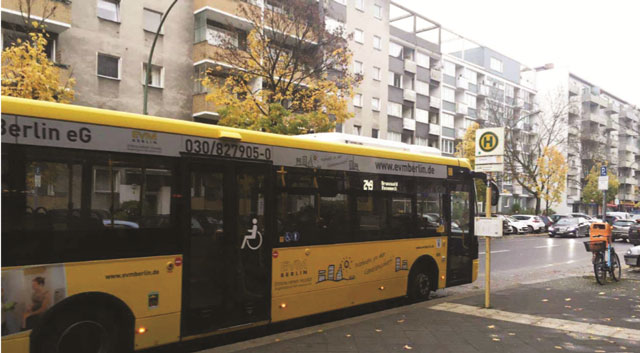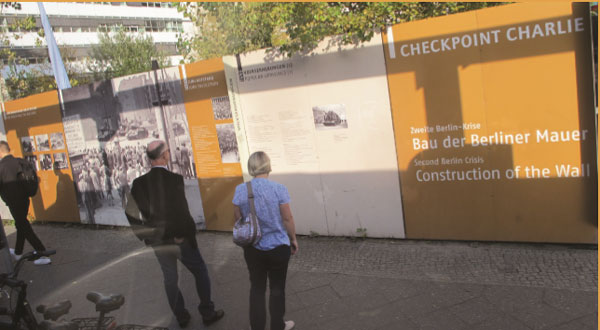
Berlin’s smart transport: How Europe’s greenest city kicked out cars
Berlin, Germany | RONALD MUSOKE | Berlin, Germany’s capital and also largest city does not have the most efficient public transport system in the country, partly because of the low incomes of residents compared to other cities around the world. In Germany, for example, the honour of having the most efficient public transport belongs to the Bavarian capital, Munich.
But that does not stop Ursula Hermann, a tourist guide in Berlin, from proudly showing off his city and the nearby city of Potsdam to visitors. Berlin is renowned for being one of the greenest cities in Europe; with more forests, gardens, and parks than any other city in Europe.
Since the 11th century, Berlin has thrived along the River Spree; a sluggish flowing river which cuts diagonally through the city. Today, the Berlin Metropolis, sprawled on a plain of up to 900sq km is remarkably vast, thanks to a merger which happened immediately after the fall of the Berlin Wall in 1989.
What followed was an amalgamation of infrastructure, never mind that the two parts of the city had undergone decades of contradictory political, economic and cultural approaches to urban development.
One big Metropolis was created overnight making it initially incredibly difficult for residents to travel from the eastern part of the city to the West. But the city planners went to work immediately and by 2002, Berlin’s inner city was encircled by a brand new Ringbahn (circular railway) that stitches together the transport systems of the former east and west parts of Berlin.
Today, Berlin city managers appear always to be planning ahead for a city which is home to at least 3.5 million residents. Trains, trams, buses, cars, ferries and small cruise boats, bikes, bicycles and even pedestrians—co-exist in one of the most modern transport systems in the world.
Berlin’s flat terrain has been put to good use as it supports cycling. Some reports show that for every 10 Berliners, there are 7 bikes and there are around 500,000 daily bike rides through the city.
Most Berliners are comfortable riding the bike in the middle of the city. Children, men, women, pensioners all seem to ride their bikes in Berlin. Most apartment and office blocks have areas for keeping the bikes. That means that it is quite easy to park your bike anywhere in the city.
It also helps that Berliners respect the traffic regulations. A cyclist who causes an accident by, for instance, running a red light, which has been red for longer than a second will get fined up to €100. If they hurt a pedestrian who is actually in a pedestrian zone, the cyclist gets charged €20.
If they cycle in the wrong direction, they get to pay €30. He or she could also be fined €25 for talking on the mobile while cycling, and if they are caught cycling while drunk, they will be taken to Court. Berlin is also friendly to pedestrians thanks to its impressive avenues, pedestrians- only- streets, green parks, squares, and riverside and canal side promenades.

Berlin’s comprehensive public transport system is currently managed by the BVG (Berliner Verkehrsbetriebe) and consists of the U-Bahn (sub-way, underground, the S-Bahn (light rail), buses, and trams.
In Berlin, therefore, private cars are dispensable as public transport is often cheaper, quicker and more carbon-friendly to use. Some sections of the city, including central Berlin, impose restrictions on private car use.
Central Berlin is in fact a restricted low—emission zone, meaning all cars entering must be low carbon emission vehicles and display a special green sticker called an `unweltplakette’. If caught without this sticker, a fine of up to €80 (Appox.Shs340, 000) awaits you.
Fortunately, public transport—one of the most important services for functional megacities—is not only regular and frequent, it is also quite affordable. In some cases, one ticket can be used seamlessly on all forms of public transport.
In reality, however, most of the time; train, tram, and bus drivers do not ask travellers to present the tickets before boarding. But a Berliner, Elena von Sperber, from the Ecologic Institute, says hefty fines apply if one is found on board without a ticket.
 The Independent Uganda: You get the Truth we Pay the Price
The Independent Uganda: You get the Truth we Pay the Price




Berliners obey the traffic rules when they are on a bike? I think that is a myth and I was born in that city.
I think nowhere in the world do bikers obey traffic rules.